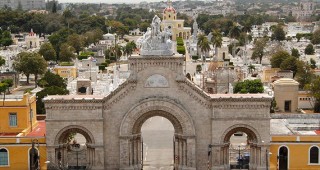
In 1664 the Presbyter of the Cathedral of Havana, don Nicolás Estévez Borges, ordered the construction of a chapel devoted to Saint Francis of Paola (founder of the Roman Catholic Order of the Minims) and a women’s hospital. Construction works began in 1668 in the neighborhood of Campeche. In 1730, a hurricane destroyed the church, which was rebuilt 10 years later in Baroque style.
In 1907, Havana Central Railroad, a US company, tried to acquire the temple to transform it into a warehouse. Fortunately, the company’s several attempts to demolish the church were stopped by the opposition of several Cuban intellectuals, including historian Emilio Roig de Leuchsenring and anthropologist don Fernando Ortiz. Their efforts not only stopped the demolition of the church, but also got it listed as National Monument in 1944. Havana Central Railroads, however, was able to bring down the hospital upon approval from the relevant authorities.
The Iglesia de San Francisco de Paula is an example of pre-Churrigueresque Baroque style and is quite similar to the Iglesia de San Francisco de Asís, with a ground plan that also took the shape of a Latin cross. Its façade, with a central arch and columns to the sides is typical of Spanish architecture. The front is crowned with a belfry, but the bells could never be recovered. The stained glass windows have been fully restored by the Office of the City Historian and are quite a sight.
Considered by many one of the most precious jewels of Havana’s heritage, this building has now been restored as a concert hall and is the base and rehearsal space of Ars Longa, which together with the City Historian’s Office organize the Esteban Salas Ancient Music Festival.










 Eclectic
Eclectic






